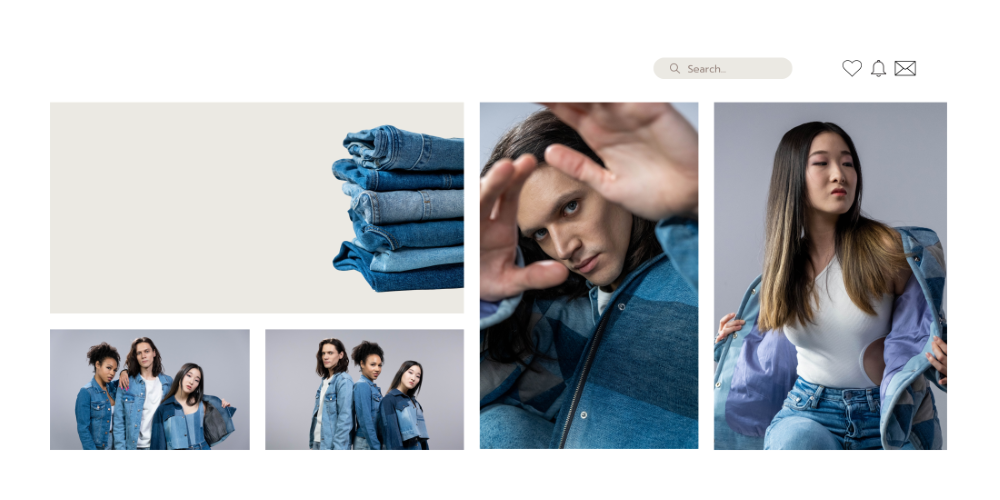Phygital Experiences: Blending Physical & Digital for Next-Gen CX

The convergence of physical and digital experiences, often referred to as 'phygital,' is a significant trend shaping the future of customer experience. As businesses strive to deliver seamless and personalized interactions, they are exploring innovative ways to blend the best of both worlds.
The Phygital Convergence: A Pivotal Shift In Customer Experience
The phygital convergence represents a pivotal shift in how businesses approach customer experience in the digital age. As C-suite executives navigate an increasingly competitive landscape, they must recognize the blurring lines between the physical and digital realms and leverage this convergence to drive tangible business outcomes.
The convergence of the physical and digital worlds opens up new avenues for data collection and analysis, enabling businesses to gain deeper insights into customer behavior and preferences. By leveraging advanced technologies such as AI, machine learning, and the Internet of Things (IoT), companies can create intelligent, data-driven experiences that continuously adapt and evolve to meet the ever-changing needs of their customers.
Phygital Convergence Offers A Powerful Opportunity To Meet Elevated Customer Expectations
Today, the consumers demand seamless and personalized experiences that transcend traditional boundaries and expect brands to understand their preferences, behaviors, and needs, whether they are engaging in the physical world or the digital realm. The phygital convergence offers a powerful opportunity for businesses to meet these elevated expectations by merging the strengths of both worlds.
As digital experience leaders, C-suite executives must embrace the phygital convergence as a strategic imperative. By investing in the necessary technologies, processes, and talent, they can position their organizations at the forefront of this transformative shift, delivering unparalleled customer experiences that drive competitive advantage and long-term business success.
In an era where customer experience is the ultimate differentiator, the phygital convergence represents a game-changing opportunity for forward-thinking executives to redefine the boundaries of customer engagement and solidify their position as industry leaders.
The Phygital Experience: Marks & Spencer, Neiman Marcus and Levi's & IKEA Use Cases
Imagine a retail environment where customers can virtually try on clothing using augmented reality (AR) technology, receiving personalized recommendations based on their preferences and body measurements. Or envision a scenario where a customer's online browsing history and purchase data inform tailored in-store experiences, with interactive displays and targeted promotions. These are just a few examples of how the phygital convergence can drive increased customer satisfaction, loyalty, and ultimately, revenue growth.
One prominent example of a phygital experience is the augmented reality (AR) shopping app from Marks & Spencer. This app leverages AR technology to provide customers with an immersive in-store experience. Using the app, customers can navigate the store with an AR filter that guides them to the location of specific items they are looking for. This not only enhances convenience but also adds an interactive and engaging element to the traditional shopping journey.
Another notable example is the implementation of 'smart mirrors' in retail stores. Companies like Neiman Marcus and Levi's have introduced these interactive mirrors in their fitting rooms. Customers can virtually try on different clothing items, mix and match outfits, and even receive personalized recommendations based on their preferences and body measurements. This phygital experience combines the physical act of trying on clothes with the digital capabilities of real-time personalization and visualization.
Virtual reality (VR) and augmented reality (AR) technologies are reshaping the digital shopping experience. IKEA, for instance, has developed an AR app that allows customers to virtually place furniture in their homes before making a purchase. This helps customers visualize how the products would look and fit in their living spaces, leading to more informed decisions and reducing the likelihood of returns.
Furthermore, companies like Sephora and Warby Parker have implemented 'virtual try-on' features on their e-commerce platforms, enabling customers to virtually try on makeup products or eyewear using their device's camera.
This phygital experience bridges the gap between online shopping and the traditional in-store experience of testing products before purchasing.
As these examples illustrate, phygital experiences leverage cutting-edge technologies such as AR, VR, and advanced data analytics to create immersive and personalized customer journeys. By seamlessly blending the physical and digital realms, businesses can provide customers with a sense of tangibility and engagement, ultimately enhancing satisfaction and loyalty.
The Future of Customer Experience: Phygital Experience
The phygital convergence is reshaping the customer experience landscape, and businesses that embrace this shift will gain a significant competitive edge. Industry experts and analysts predict that phygital experiences will become increasingly prevalent as technology advances and consumer expectations continue to evolve. Companies that embrace this trend and invest in these innovative solutions will be well-positioned to differentiate themselves and deliver superior customer experiences in the years to come.
To stay ahead of the curve and unlock the full potential of this transformative trend, visit our website for in-depth insights and expert analysis. Additionally, subscribe to our podcast, where industry thought leaders share their perspectives on navigating the phygital revolution and delivering exceptional digital experiences.




